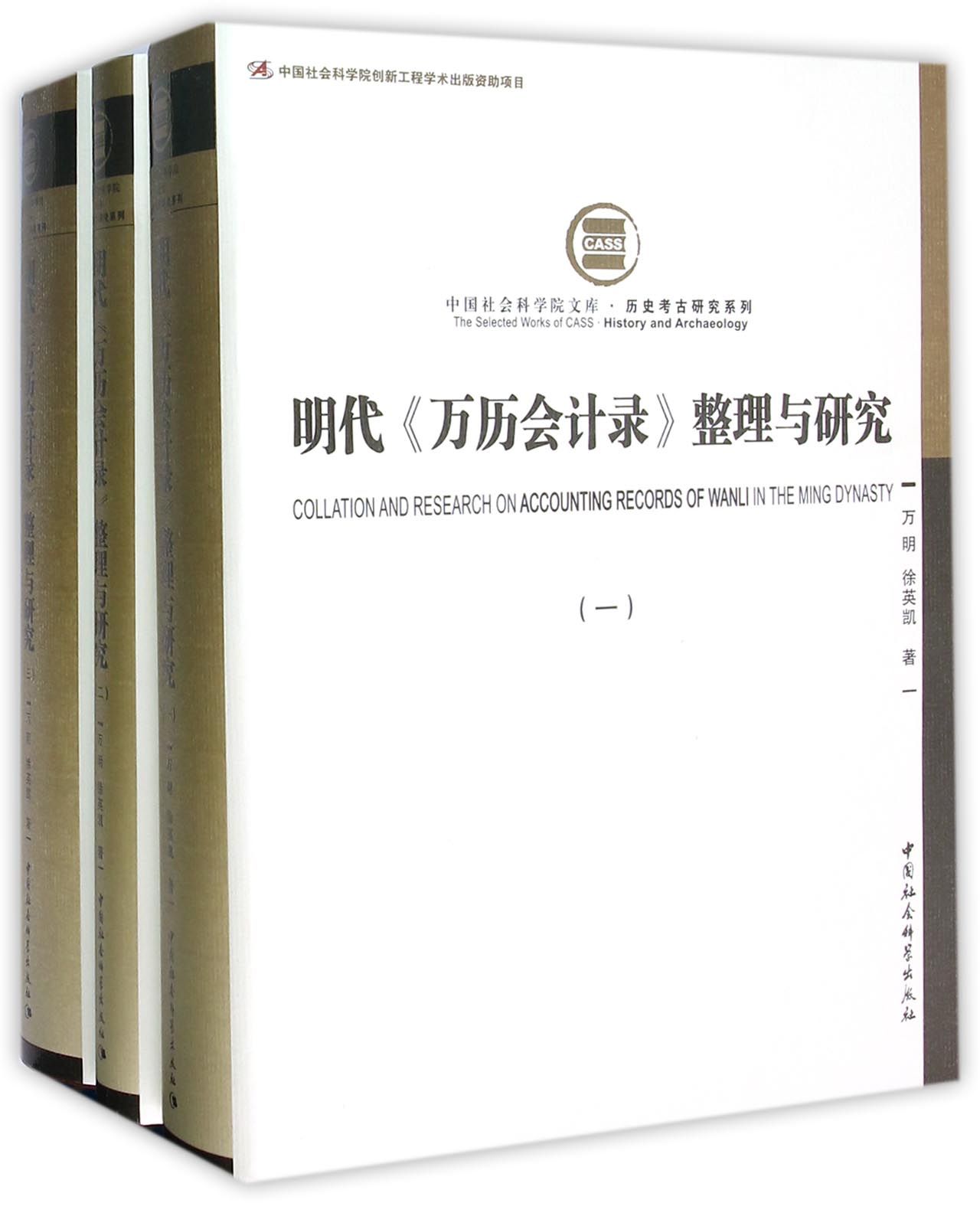A new milestone in Ming fiscal history research

Collation and Research on Accounting Records of Wanli in the Ming Dynasty
Author: Wan Ming and Xu Yingkai
Publisher: China Social Sciences Press
The Accounting Records of Wanli is a book completed in 1582 that recorded the financial revenue and expenditures of the Ming Dynasty (1368-1644). It represents the most systematically recorded data on national finance during the Chinese imperial era. The book demonstrates the basic terms and regulations related to central government budget management during the Wanli years (1573-1620) in the Ming Dynasty, and provides information on the transformation of certain policies from the early Ming to the early years of the Wanli period.
Collation and Research on Accounting Records of Wanli in the Ming Dynasty contains both the original data and contents, along with research related to the Accounting Records of Wanli. With the help of historians and mathematicians, this data has been put in diagrams in order to be referenced in a more convenient way. The book is superior to previous works in that it brings forth clear ideas about the characteristics and value of the Accounting Records of Wanli, and more than ever provides details on the background, process and the participants of how the book came into being. Wan Ming and his research team indicate that the ancient book is the most comprehensive work on national finance and accounting, involving the transformation of the Ming fiscal framework and the realities of the budget structure and operation mechanisms, while also including problems relating to economic, political, cultural, social and other fields.
One of the dominant features of the book is that it takes the monetization of silver as a clue, and investigates China’s financial research in the Ming Dynasty by setting it against the overall trend of evolving world history. The currency of China in the imperial era was mostly coins, with auxiliary items of cloth and paper money at times. Silver was widely circulated in the Song (960-1279) and Jin (1115-1234) dynasties, but still not the stable leading currency. In the early Ming years, coins were used, and later paper money was forced to be used as the main currency. However, paper money was so easily worn out that the public preferred silver, and the government, though it tried to prevent this from happening, had to recognize silver as the main currency in the end, with coins as auxiliary means of circulation. This phenomenon was indeed caused by domestic reasons but also influenced by the input of loads of silver from foreign trade, which promoted fundamental change in the Chinese currency system, and facilitated the transformation of the financial framework from being commodity-centered to be the binary system of the coexistence between commodities and currency. It also fused Chinese history with world history by unifying the two currency systems using silver in circulation.
In addition, the book also shed light on Zhang Juzheng’s reform that aimed at bringing new blood into the decaying Ming Dynasty. Zhang’s purpose was to reconstruct the financial system that previously fell into disorder due to constant currency changes, and the Accounting Records of Wanli, which emerged during that time, confirmed the leading position of silver. This in turn spurred the official commencement of China’s documented modern history of currency and finance.

 PRINT
PRINT CLOSE
CLOSE